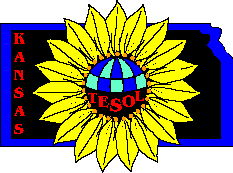The History of Halloween
Every October 31st, people throughout the United
States celebrate "Halloween." A holiday whose origins date to 835
A.D. In that year, the Roman Catholic Church declared November 1 a
church holiday to honor all saints. The name "Halloween" is a short way of
saying All Hallow's Eve, the night before All Saints' Day (hallow means
holy or sacred).
Although Halloween gets its name from a Christian
festival, the customs are mostly of Celtic origin, from an ancient Celtic
festival in honor of Samhain, lord of death. Some of the customs are
also from the Roman festival in honor of Pomona, goddess of gardens and
orchards. The colors of Halloween, black and orange, suggest both
ideas - death and harvest.
The "spooky" part of Halloween comes from the Celts,
who occupied the British Isles and northern France during ancient and
medieval times. The Celts worshipped gods of nature. They
feared the coming of winter, associating it with death and evil
spirits. Every year on October 31, the last day of the year on the
old pagan calendar, the Druids (Celtic Priests and teachers) built huge
bonfires to scare away the demons of evil and death. They threw
animals and crops from the harvest into the fire as gifts to satisfy the
evil spirits, and dressed in ugly and frightening costumes so that the
demons would think that they were one of them and would do them no
harm. Supposedly, on this evening ghosts rose from their graves and
witches rode through the air on broomsticks or black cats. Also, the souls
of dead relatives and friends were expected to return to earth for a
visit. The Druid bonfires were built on hilltops to guide these
spirits back home.
From the Druid religion, then, comes the custom of
dressing up in costumes and the symbols of Halloween: ghosts, skeletons,
devils, witches, black cats, and owls. The jack-o'-lantern is also
of Celtic origin. It was an Irish custom to hollow out turnips and
place lighted candles inside them to scare evil spirits away from the
house. In the United States, the native pumpkin is used to make a
jack-o'-lantern. First the pumpkin is hollowed out; then holes are
cut in the shell to make eyes, nose and mouth. A candle is placed
inside, and the jack-o'-lantern is placed by the window.
The Irish also introduced the "trick-or-treat" custom
hundreds of years ago. Groups of farmers would travel from house to
house requesting food for the village's Halloween festivities. They
would promise good luck to generous contributors and would threaten those
who were stingy. Today, American children dress up and go
"trick-or-treating" for candy.
The Druid religion lasted longest in Ireland and
Scotland, and Halloween was most important in these two countries.
In the late nineteenth century, Irish immigrants brought their Halloween
customs to the United States. Today, Halloween is much more
important in the United States than it is in Great Britain.
Submitted by M. Mordy, from an old ALA
Newsletter]
Halloween
Quiz
